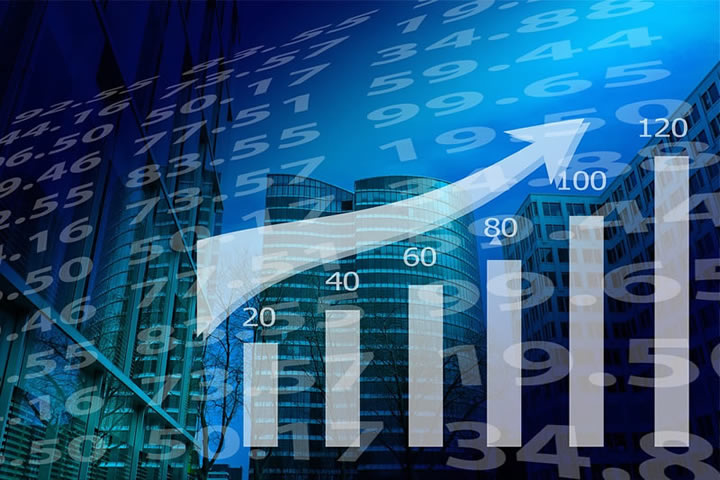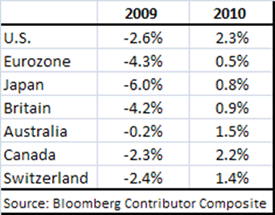Global Economic Recovery Good or Bad for the U.S. Dollar?
Currencies / US Dollar Aug 29, 2009 - 01:56 PM GMT Bryan Rich writes: If you’ve followed my commentary on currencies here in Money and Markets, you are well aware of the risk dynamic that has been driving currencies and other financial markets since the middle of last year.
Bryan Rich writes: If you’ve followed my commentary on currencies here in Money and Markets, you are well aware of the risk dynamic that has been driving currencies and other financial markets since the middle of last year.
In this crisis environment, market participants have been keenly focused on risk. And the dollar has served as the primary safe haven vehicle for global capital.
For that reason, bad news has been good for the dollar as investors flee riskier investments in search of safety. And good news has been bad for the dollar as investors feel more comfortable moving out of the dollar and back toward higher-risk, higher-return investments.
Here’s how the currency market has been robotically responding to the ebb and flow of risk appetite…
When Risk Appetite is High | When Risk Appetite is Low | |
U.S. dollar | Loses | Wins |
Swiss franc | Wins | Loses |
Japanese yen | Loses against higher yielders | Wins first, then loses |
Euro | Wins | Loses |
British pound | Wins | Loses |
Canadian dollar | Wins | Loses |
Australian dollar | Wins | Loses |
Emerging Market Currencies | Wins | Loses |
Remember, the strong orientation toward risk aversion was caused by the financial crisis, the same one that nearly collapsed the global financial system and caused an economic downturn that was feared to become a global depression.
But now, disaster appears to have been averted. And there’s an increasing public and official outlook that the recession is ending …
Germany and France surprised the world by producing positive growth in the second quarter this year. Since then the sentiment about global recovery has been kicked into another gear.
Japan followed by reporting positive second-quarter growth …
And the Fed has been more upbeat on the U.S. economy. In the recent statement following its monetary policy meeting, the Fed noted that the economy was “leveling out” and began to consider strategies to end its quantitative easing program.
Since then, Bernanke has said that the U.S. economy is emerging from recession.
One of his colleagues at the Fed followed this week by indicating that the Fed may not need to execute the full extent of its quantitative easing plan. Another reiterated expectations for growth in the second half of this year.
So Why Do Financial Markets Still Trade So Tightly to This Risk Orientation?
 |
| The rise in global stock markets indicates that there’s more hunger for return than fear of risks. |
The rise in global stock markets suggests that market participants truly believe in a strong recovery and believe that the worst is behind us. In fact, the strength and resilience of the rally in “riskier” assets like stocks are evidence that the markets are less and less concerned about the looming risks to global economies.
Simply put: There’s more hunger for return than fear of risk.
That being the case, right or wrong, currency markets should then return to the conventional fundamentals that drive currency values: Relative growth and relative interest rates.
And we’re seeing signs of this transformation taking place …
A few weeks ago, the U.S. employment data showed surprising improvements. There were fewer jobs lost and the unemployment rate fell for the first time since April 2008. This was a positive development for the U.S. economy.
As a result:
- U.S. stocks surged,
- 10-year Treasury notes fell to the lowest levels since June (sending yields higher),
- And the dollar moved aggressively higher.
For the dollar to move higher on prospects for improved U.S. growth and higher U.S. interest rates is a distinct change in this crisis environment.
But it was short lived … the following Monday the markets reverted right back to the risk aversion vs. risk taking mode.
 |
Then, we got another glimpse of change: Two Friday’s ago, Fed Chairman Bernanke spoke in Jackson Hole, Wyoming, at the Kansas City Fed symposium. And his commentary on the economy was noticeably upbeat. That sent the stock market higher, bond yields higher and the dollar rallied again!
More positive news for the U.S.: The table on the right shows the latest GDP estimates …
As you can see, the U.S. is projected to have among the shallower of economic contractions in 2009 and experience the most growth in 2010 relative to its major advanced-economy counterparts.
In other words, the U.S. is expected to help lead the world out of its recession.
 |
| A surging demand for the dollar could come from two different fronts. |
A Possible Win-Win Set-Up For the Dollar …
Of course, despite the overly optimistic view reflected in the financial markets right now, the risks to this growth scenario are great. But that doesn’t mean the currency markets won’t participate in the growing momentum of the recovery theme.
What it does mean is that the dollar could become positioned to gain favor on two different fronts …
- Favored against those currencies that are expected to experience inferior growth.
- And favored as a safe haven if/when a shock to the recovery theme takes place.
For now, the two recent episodes of dollar strength are strong signs that the crisis-oriented trend of “what’s good for the U.S. economy is bad for the dollar” is waning.
Regards,
Bryan
P.S. I’m now on Twitter. Follow me at http://www.twitter.com/realbryanrich for frequent updates, personal insights and observations from my travels around the world.
If you don’t have a Twitter account, sign up today at http://www.twitter.com/signup and then click on the ‘Follow’ button from http://www.twitter.com/realbryanrich to receive updates on either your cell phone or Twitter page.
This investment news is brought to you by Money and Markets . Money and Markets is a free daily investment newsletter from Martin D. Weiss and Weiss Research analysts offering the latest investing news and financial insights for the stock market, including tips and advice on investing in gold, energy and oil. Dr. Weiss is a leader in the fields of investing, interest rates, financial safety and economic forecasting. To view archives or subscribe, visit http://www.moneyandmarkets.com .
Money and Markets Archive |
© 2005-2022 http://www.MarketOracle.co.uk - The Market Oracle is a FREE Daily Financial Markets Analysis & Forecasting online publication.



